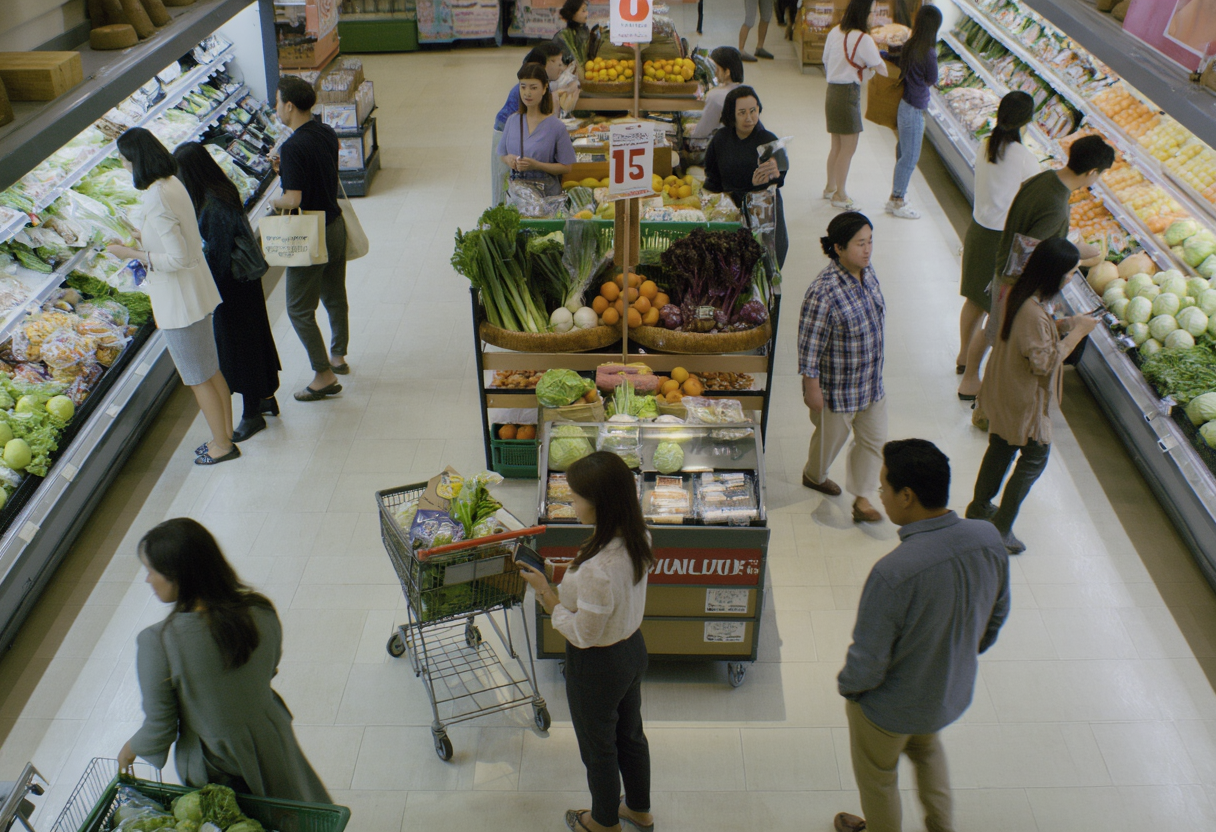The Future of Grocery Shopping: How Technology is Transforming Our Experience
As technology continues to advance, grocery shopping evolves into a seamless blend of physical and digital experiences. Smart cart technology, mobile apps, and online platforms are revolutionizing how consumers shop for food, making it more efficient and personalized. Understanding these changes is crucial for adapting to the future of grocery shopping.
Innovative Approaches in Grocery Shopping
The landscape of grocery shopping is undergoing revolutionary changes as technology integrates itself into everyday purchasing habits. No longer are shoppers confined to traditional aisles and baskets; the digital age has transformed the grocery store into a hybrid experience. Smart technology, such as mobile applications and self-checkout kiosks, are enhancing convenience, enabling consumers to plan, purchase, and gather information on products before even stepping into a store. The incorporation of services like online ordering and delivery has redefined grocery shopping, allowing consumers to select items from the comfort of their own homes. Consequently, grocery shopping is evolving to meet consumer demands for immediacy and accessibility, thus reshaping the retail landscape.
Consumer Behavior in the Age of Grocery Shopping
As grocery shopping becomes increasingly convenient, consumer behavior shifts dramatically. Modern consumers are more informed and engaged than ever before, particularly due to the wealth of information available online. This evolution in grocery shopping means that shoppers frequently consult reviews, compare prices, and seek personalized recommendations through various digital platforms. It is noteworthy that the demographic of grocery shoppers is also changing; millennials and Gen Z are now prominent contributors to grocery store sales, valuing sustainability and quality over quantity. Therefore, understanding these behavioral patterns is essential for businesses aiming to compete in the evolving grocery shopping market.
The Role of Sustainability in Grocery Shopping Habits
Sustainability has emerged as a vital component influencing grocery shopping habits. Consumers are increasingly prioritizing eco-friendly products and practices within stores. A significant trend is the demand for locally sourced produce, which not only supports local economies but also reduces carbon footprints associated with long-distance food transport. Moreover, grocery stores are adapting to these changes by implementing sustainable practices such as reducing plastic waste, offering bulk purchasing options, and enhancing their organic selections. This shift indicates that grocery shopping is not merely about food; it now encompasses ethical considerations, compelling retailers to align their business models accordingly.
The Influence of Mobile Technology on Grocery Shopping
Mobile technology plays a crucial role in redefining how we approach grocery shopping. With mobile apps designed for grocery shopping, consumers can easily create shopping lists, track sales, and even receive personalized discounts. This has markedly improved the efficiency of grocery shopping, eliminating the need to wander aisles without a clear purpose. Additionally, features like barcode scanning and nutrition information at users' fingertips help consumers make informed choices rapidly. The convenience offered by mobile technology is transforming grocery shopping from a chore into a more engaging experience.
Future Trends in Grocery Shopping
Looking forward, several trends are set to reshape the grocery shopping landscape even further. Automation and artificial intelligence are paving the way for smarter inventory management, improving product availability and reducing food waste. Augmented reality (AR) is also on the horizon, promising to enhance the shopping experience by providing interactive product information and virtual shopping assistants. Additionally, the rise of subscription meal kits highlights a desire for convenience, pushing retailers to innovate their offerings in the grocery shopping sector. It is essential for consumers and retailers alike to adapt to these technological innovations, as they promise to streamline and enrich the grocery shopping experience.
Conclusion: Embracing the Future of Grocery Shopping
As we embrace the future of grocery shopping, it is clear that technology will play a pivotal role in shaping consumer experiences. From mobile apps facilitating seamless transactions to sustainable practices influencing what products are offered, the grocery landscape continues to evolve. Businesses must stay ahead of trends to capture the ever-changing consumer preferences, while consumers can leverage these innovations to enhance their grocery shopping efficiency. Embracing these changes will define the future of grocery shopping for all stakeholders involved.
